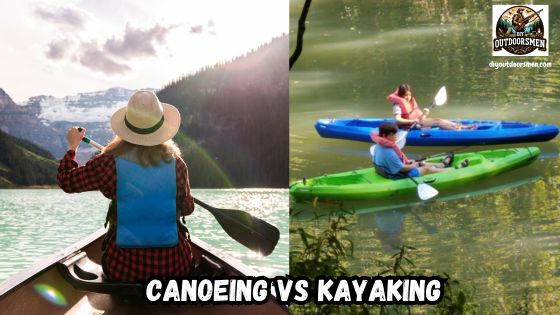Contents
- 1 A Brief Overview of Canoeing and Kayaking
- 2 Pros and Cons of Canoeing
- 3 A Closer Look at Kayaking
- 4 Key Considerations for Choosing Your Paddling Style
- 5 Tips for Beginners in Paddling
- 6 Challenges and Things to Consider
- 7 Advanced Tips to Step Up Your Paddling Experience
- 8 Frequently Asked Questions on Canoeing vs Kayaking
- 9 Final Thoughts on Canoeing Versus Kayaking
I have always enjoyed spending time on the water and exploring different ways to appreciate nature. Canoeing and kayaking offer unique experiences, and each has its own benefits and challenges. In this article, I share my thoughts on the differences between these two popular paddling styles to help you decide which might be right for you based on your interests, experience level, and intended use.
QUICK LOOK: 7 Things to Consider in Canoeing Versus Kayaking
- Water Conditions: If you expect to paddle on calm lakes or slow-moving rivers, a canoe might be your best bet because of its inherent stability. However, if you plan to tackle choppy water or even sections of rapids, a kayak offers the quick responses and agility needed for those conditions.
- Number of Paddlers: When outings include family or friends, the extra room provided by a canoe encourages a shared, social experience on the water.
- Gear and Storage: If you are planning to bring along fishing gear, camping supplies, or other bulky items, the generous cargo capacity of a canoe becomes a major advantage.
- Personal Preference and Skill Level: Beginners often find canoes more inviting due to their stability, while a more technical and active paddling style may push you to try a kayak.
- Handling and Manuverablility: Canoes, with their larger and more open design, require a different approach to steering. I once needed to make quick turns in a canoe and realized it was less responsive than a kayak.
- Stability and Comfort: The stability of a canoe can make for a relaxed ride, but kayaks can initially feel unsteady, particularly for those new to the sport.
- Portaging and Transport: The weight and size of canoes can turn portaging into a real challenge when you need to carry your vessel over land. On the other hand, kayaks are generally lighter and easier to manage when moving between different sections of your journey.
A Brief Overview of Canoeing and Kayaking
Canoeing and kayaking have a long history as a means of transportation, recreation, and exploration. I have seen both styles used on calm lakes for family outings as well as on more dynamic rivers for spirited adventures.
Canoes often serve those seeking a stable vessel that can carry extra gear and accommodate several paddlers. In contrast, kayaks are popular with solo enthusiasts who appreciate agility and speed. My experience tells me that the best option really depends on where you plan to paddle and what aspects of the water experience you value most.
Pros and Cons of Canoeing
Canoeing steadily remains a favorite for families and groups. These open boats, known for their spacious and stable design, are ideal if you need to bring along extra equipment or simply wish to enjoy a calm ride on a quiet body of water. The inherent stability and generous capacity make canoes a great choice for leisurely trips where comfort and roominess are priorities.
Pros of Canoeing
| Stability: Canoes have a wide, stable design that makes them less likely to tip over, an advantage on calm water or when you are carrying additional equipment. |
| Cargo Capacity: Their larger size means you can pack everything from fishing gear to camping supplies. I have found this ability particularly useful during longer excursions. |
| Group Paddling: The design that seats multiple paddlers encourages group outings, team bonding, and shared experiences on the water. |
| Relaxed Exploration: Canoes are well-suited for unhurried exploration of lakes and rivers, where the pace is gentle and the social aspect of paddling shines through. |
Cons of Canoeing
| Maneuverability: Canoes tend to be less agile than kayaks. Turning in narrow spaces or quickly avoiding obstacles can be more challenging. |
| Wind Resistance: With a larger, higher profile, canoes catch more wind, making them harder to control on breezy days. |
| Portaging: Their bulk and weight can become an issue when you need to carry the vessel over land between waterways. |
| Paddling Efficiency: In certain water conditions, a canoe may feel slower compared to a streamlined kayak, a factor worth considering if speed matters to you. |
A Closer Look at Kayaking
Kayaks are built for speed and nimbleness, making them the favorite for solo paddlers and those who seek a more intense water experience. The streamlined design and compact size allow for quick maneuvering through tight passages and choppy waters.
Although the closed cockpit design offers protection from the elements, it does limit storage space compared to canoes. In my experience, kayaking creates a closer and more fast-paced connection with the water.
Pros of Kayaking
| Maneuverability: I have found that kayaks respond quickly when steering through narrow passages or around obstacles, thanks to their design that allows for rapid movements. |
| Solo Paddling: Their compact form makes kayaks ideal for a personal paddling adventure where you focus solely on the experience. |
| Speed: Built for efficiency, kayaks let you travel faster. This is particularly valuable when you are navigating choppy or swift-moving waters where quick action is needed. |
| Portaging: With a lighter build, kayaks are easier to transport overland, simplifying the process when switching between waterways or moving your vessel to a new launch point. |
Cons of Kayaking
| Stability: Kayaks can feel unstable on calm waters, especially for beginners. I have noticed that newcomers sometimes struggle with balance until they gain more experience. |
| Cargo Capacity: The limited storage in kayaks means they are not the best option if you plan to carry a lot of extra gear during your trips. |
| Comfort on Extended Trips: While efficient, the seating in many kayaks can be less comfortable on long journeys, particularly for those not accustomed to the compact design. |
| Paddling Technique: Kayaking requires a refined technique. I recall that mastering the proper paddle stroke was essential to reduce fatigue and maintain control over the vessel. |
Key Considerations for Choosing Your Paddling Style
Your choice between canoeing and kayaking depends on a number of important factors. I assess the water conditions, the number of participants, and the type of gear I intend to carry before picking a vessel. You might consider similar questions as you plan your adventure. Each option has its own trade-offs and rewards.
Water Conditions
If you expect to paddle on calm lakes or slow-moving rivers, a canoe might be your best bet because of its inherent stability. However, if you plan to tackle choppy water or even sections of rapids, a kayak offers the quick responses and agility needed for those conditions.
Number of Paddlers
The size of your group plays a crucial role. While I personally enjoy the solitude of kayaking, when outings include family or friends, the extra room provided by a canoe encourages a shared, social experience on the water.
Gear and Storage
If you are planning to bring along fishing gear, camping supplies, or other bulky items, the generous cargo capacity of a canoe becomes a major advantage. Kayaks, with their limited storage, are more suited for trips where you are traveling light or have specialized compact gear.
Personal Preference and Skill Level
Ultimately, your comfort and familiarity with water activities should guide your decision. Beginners often find canoes more inviting due to their stability, while a more technical and active paddling style may push you to try a kayak. The right choice is the one that best matches your skill level and personal preferences.
Tips for Beginners in Paddling
Starting out on your water adventure is exciting yet requires careful planning. I have picked up several practical tips over the years that can help new paddlers feel more confident and comfortable on the water.
- Choose the Right Vessel: Consider what type of paddling you plan to do most. If group outings or extra cargo space appeal to you, take a closer look at canoes. If solo journeys and agile maneuvers are your style, a kayak might be a better starting point.
- Take a Basic Lesson: Even with a natural affinity for water activities, a short course on paddling techniques can prevent injuries and make your outings more enjoyable. I found that a basic lesson provided a solid foundation and boosted my confidence significantly.
- Practice in Safe Conditions: Start in calm, open waters where you can get comfortable with your vessel. Practice your strokes, learn how to steer gently, and get a feel for balancing your boat without the pressure of challenging conditions.
- Understand Your Equipment: Whether you opt for a canoe or a kayak, take time to learn about its features. Familiarity with your equipment helps you make better decisions on the water and improves overall safety.
- Gear Up Appropriately: Safety should always come first. Make sure to use life jackets and waterproof clothing to protect yourself from unforeseen conditions, regardless of your choice of paddling style.
Challenges and Things to Consider
Every water activity comes with its own set of challenges. I have faced several obstacles on my trips that taught me the value of preparation and proper technique. Both canoeing and kayaking offer unique difficulties that might affect your overall experience.
Handling and Maneuverability
Canoes, with their larger and more open design, require a different approach to steering. I once needed to make quick turns in a canoe and realized it was less responsive than a kayak. The slower maneuverability demands that you plan your movements carefully and be constantly aware of your surroundings.
Stability and Comfort
While the robust stability of a canoe can make for a relaxed ride, kayaks can initially feel unsteady, particularly for those new to the sport. Early on, I experienced a few wobbly moments in a kayak. With consistent practice and adjustments to seating position, however, that instability can be significantly reduced.
Portaging and Transport
The weight and size of canoes can turn portaging into a real challenge when you need to carry your vessel over land. I have witnessed fellow paddlers grapple with heavy canoes on rugged trails. On the other hand, kayaks are generally lighter and easier to manage when moving between different sections of your journey.
Advanced Tips to Step Up Your Paddling Experience
Once you have mastered the basics, it is time to fine-tune your skills and take your paddling to the next stage. These advanced tips have helped me make the most of my time on the water and could give you that extra boost in confidence and ability.
Optimize Your Paddle Technique: Learning the proper rhythm and movement behind each paddle stroke can reduce fatigue and improve efficiency. I spent many hours practicing on calm water before gradually taking on more challenging conditions.
Improve Your Posture: A stable and comfortable seating position makes a noticeable difference on longer trips. Experiment until you find a stance that not only supports your back but also minimizes fatigue over time.
Study the Water: Successful paddling is about reading the water. I always take a moment to observe the currents, wind direction, and any potential obstacles before beginning my trip. This careful analysis helps me plan a safer route and avoid unexpected challenges.
Frequently Asked Questions on Canoeing vs Kayaking
Many questions arise when choosing between canoeing and kayaking. Below are some common queries along with answers derived from my observations and experiences.
Which is easier for beginners?
Canoeing is generally more forgiving because of its stability and spacious design. It offers a lower risk of tipping, which helps newbies build confidence quickly.

What about group outings versus solo adventures?
Canoes are better for group experiences since they allow multiple paddlers to enjoy the trip together. Kayaks, by comparison, are ideal if you prefer a more focused, solo journey.
How do water conditions influence the choice?
For calm lakes or slow rivers, canoes usually offer a more comfortable ride. When conditions get rough or the water moves quickly, the nimble design of a kayak makes it the preferred option.
And what about gear and storage needs?
Canoes typically have greater storage space, making them perfect if you plan to carry extra equipment like fishing gear or camping supplies. Kayaks, with their limited capacity, are recommended for trips where you travel light.
Final Thoughts on Canoeing Versus Kayaking
The choice between canoeing and kayaking does not have a one-size-fits-all answer. My experiences have taught me that what works well for one trip might not be as effective for another. Your decision ultimately depends on the waters you plan to explore, whether you paddle alone or with others, and the amount of equipment you need to bring along.
By considering factors such as stability, cargo capacity, maneuverability, and your personal skill level, you can make an informed decision that suits your lifestyle. Both paddling styles have unique rewards, and trying each one might be the best way to determine which fits your personal adventure style best.
I encourage you to gain experience with both forms of paddling. Spending quality time on the water and practicing under different conditions will help you build confidence and refine your skills. Whether you choose canoeing or kayaking, there is always a new challenge waiting on the shore, and every trip can introduce you to a fresh perspective on nature.
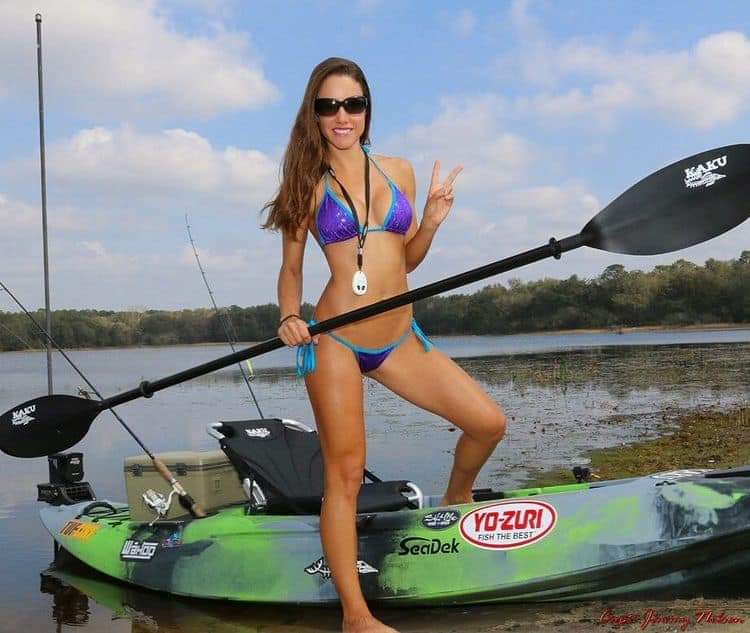
Paddling is not just a means to get from one place to another. It is an opportunity to connect with the outdoors, relax, and even break away from the hectic pace of daily life. A canoe might be perfect when you have family or extensive gear, while a kayak offers an agile solution for those craving a swift, solitary ride.
Always remember to keep safety at the forefront of your adventures. Use the proper equipment, be aware of the water conditions, and consider taking lessons before venturing further out. These measures not only keep you safe but also ensure that every outing is as enjoyable as possible.
I have always believed that water holds countless opportunities for relaxation, exercise, and exploration. By choosing the right paddling method and preparing adequately, you set the stage for memorable experiences that bring you closer to nature. Enjoy your time on the water, and may every paddle stroke lead to a satisfying adventure.
Most Recent Articles:
- 9 Crossbow Maintenance And Care Tips
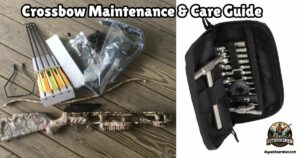
- Beginner-friendly Fly Selection Packs
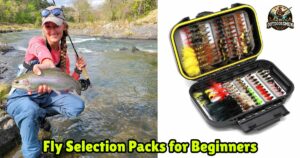
- Reviews And Comparisons Of Hunting Crossbows

- Budget-friendly Backpacking Fly Rod Combos
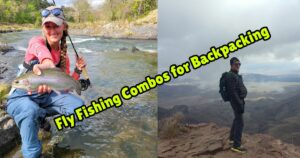
- 9 Crossbow Accessories And Gear For Hunting

- 5 Budget-friendly Fly Rod And Reel Starter Combos
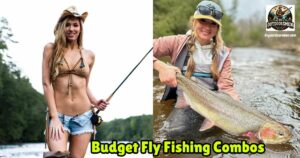
As always, stay safe, enjoy the journey, and please try to leave it cleaner than you found it. If you have any comments, questions, ideas, or suggestions, please leave them in the comment section below, and I’ll get back to you ASAP. You can follow us on YouTube: Man Art Creations for videos of our DIY Adventures.
P.S. Thanks so much for checking out our blog; we really appreciate it. Just so you know, we may receive a commission if you click on some of the links that appear on our site. This helps us keep our content free and up-to-date for everyone. We appreciate your support!

